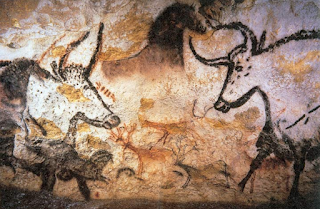1400
Saps, and the anal grease of an otter, and pig's blood,
and the crushed-up bulbous bodies of those insects
that they'd find so thickly gathered on barnyard excrement
it makes a pulsing rind, and oven soot, and the oil
that forms in a flask of urine and rotting horseflesh,
and the white of an egg, and charcoal, and the secret
watery substance in an egg, and spit-in-charcoal
in a sluggish runnel of gray they mixed
with the harvested scum of a bloated tomato,
and steamed plant marrows beaten to a paste,
and orange clay, and auburn clay, and clay bespangled
with the liquid pearl of fish scales stirred in milt,
and suet, and glue boiled out of a hoof,
and ash, and grape-like clusters of fat grabbed
out of a chicken carcass and dried in the sun
until it became inert and yet still pliable, and lime,
and the pulp of the cherry, and the pulp of the cherry
immersed in egg, and coral in a powder,
and silver flake, and fig, and pollen, and dust, and beeswax,
and an iridescence scraped with infinite care
from the wings of hundreds of tiny flying things,
and salted iridescence, and human milk, and ores,
and gall, and stains expressed from teas, and gobs of squeeze-off
from the nettings of cheese, and rouge, and kohl,
and luster, and oyster, and lees: and so from these
they made their paints: and then
their Gods and their saints.
–Albert Goldbarth (born 1948)
• • •






































































